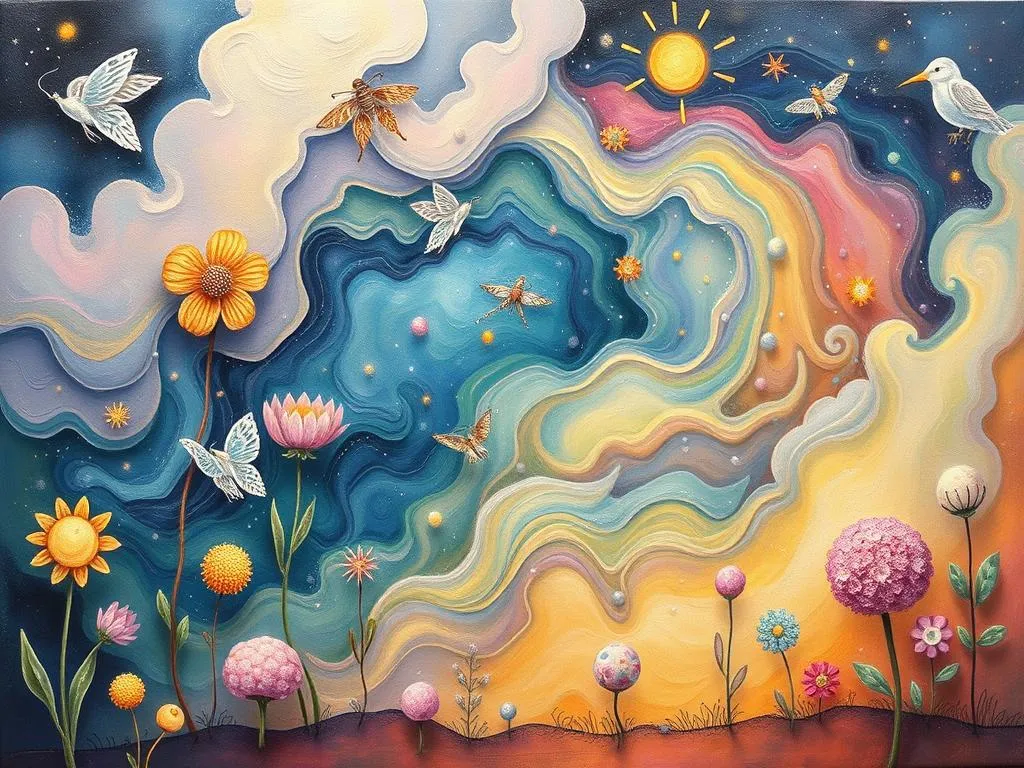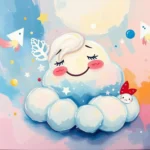
Dreams have long fascinated humanity, serving as windows into our subconscious minds. They can be vivid, abstract, or even jarring, often leaving us with lingering emotions upon waking. Among the many components that make dreams so intriguing is the symbolism embedded within them. Each symbol can represent a myriad of meanings, shaped by personal experiences, cultural contexts, and psychological theories. Understanding these symbols can illuminate personal insights and foster deeper self-awareness, making the study of dreams not just an academic pursuit but a profound journey into the self.
Symbolism and Meaning
When exploring the biology of dream symbols, it’s essential to recognize that symbols often function as a form of language within our subconscious. For instance, one common symbol that frequently appears in dreams is water. Water can represent a variety of emotions; it might signify cleansing, renewal, or even the depths of one’s feelings. Dreaming of calm waters may evoke serenity and peace, while turbulent waters could indicate emotional turmoil or uncertainty.
Another prevalent symbol is flying. The act of soaring through the sky can be interpreted as a desire for freedom and escape from the constraints of daily life. However, flying dreams can also reflect feelings of empowerment or transcendence over challenges. Conversely, if one experiences difficulty in flying—such as being weighed down or unable to gain altitude—it may signify feelings of inadequacy or fear of failure.
Animals also play a significant role in dream symbolism. For example, dreaming of a lion often embodies courage and strength, reflecting the dreamer’s inner resolve. In contrast, a snake may invoke feelings of treachery or transformation, depending on the dreamer’s personal associations with the creature. This duality emphasizes the importance of context in dream interpretation; the same symbol can carry vastly different meanings based on individual experiences and emotional states.
Moreover, colors in dreams can enhance the symbolism of various scenarios. For instance, dreaming of a bright red object might evoke feelings of passion or anger, while blue could symbolize calmness or sadness. The emotional resonance of colors can provide additional layers of meaning, enriching the overall narrative of the dream.
Understanding the diverse perspectives on these symbols can deepen one’s comprehension of their significance. For instance, Jungian psychology posits that symbols in dreams can serve as archetypes, representing universal human experiences. In contrast, Freudian interpretations might focus more on repressed desires or fears manifesting through symbols. Engaging with these varying viewpoints encourages personal reflection and allows for a more nuanced understanding of one’s dreams.
Key Scenarios and Variations
The interpretation of dream symbols can vary significantly based on the scenarios in which they appear. For instance, consider the common scenario of being chased in a dream. This can evoke feelings of anxiety, but the chase itself can symbolize avoidance—perhaps the dreamer is trying to escape from responsibilities or unresolved issues in their waking life. However, if the dreamer turns to confront the pursuer, this shift can signify a willingness to face fears or challenges head-on, suggesting a transformative journey from avoidance to acceptance.
Another scenario worth exploring is the experience of falling. Falling dreams are often linked to feelings of insecurity or lack of control. However, the interpretation can differ based on the dreamer’s emotional state and the circumstances surrounding the fall. For instance, if the fall is accompanied by a sense of thrill or excitement, it might indicate a leap into the unknown—an embrace of change rather than a fear of it. On the other hand, if the fall is chaotic and frightening, it may highlight deeper anxieties about failure or loss of stability.
Consider also the dream scenario of being unprepared for a significant event, such as an exam or a public performance. This can often evoke feelings of vulnerability or inadequacy, symbolizing the dreamer’s fears about not measuring up to expectations. However, if the dreamer manages to succeed despite their initial feelings of unpreparedness, it may reflect hidden strengths and resilience that they are yet to recognize in their waking life.
Further variations can be observed in dreams involving relationships. A dream about an old friend might evoke nostalgia and signify unresolved feelings about that relationship. Alternatively, dreaming of a partner may reflect the dreamer’s current emotional state regarding intimacy or commitment. Here, the symbols associated with the individuals in the dream can unveil layers of meaning connected to personal desires, fears, and relational dynamics.
By examining these varied scenarios, we can observe how context shapes the way symbols are interpreted. Each dream presents a unique narrative that invites the dreamer to explore their emotions, thoughts, and experiences.
Real-Life Connections and Takeaways
Understanding the symbolism in dreams is not merely an academic exercise; it can offer profound insights into real-life situations. As readers reflect on their dreams, they may uncover connections between their subconscious experiences and their waking lives. One practical approach to this self-reflection is to maintain a dream journal. Recording dreams as soon as one wakes can help capture the details and emotions that may fade with time. Reviewing these entries over days or weeks can reveal patterns in recurring symbols or themes, allowing for deeper introspection.
Another way to connect dreams to real life is to contemplate the emotional responses elicited by the symbols. Ask yourself questions such as: What feelings arise when I encounter this symbol in my dreams? How do these feelings relate to my current life situations? Engaging with these inquiries can facilitate a better understanding of how subconscious messages resonate with conscious experiences.
Moreover, consider the potential for dreams to serve as catalysts for personal growth. If a recurring symbol, such as being chased, reflects avoidance in waking life, it might prompt the dreamer to confront what they are running from. This confrontation can lead to actionable steps toward resolving conflicts or addressing fears. In this way, dreams can act as guides, illuminating paths toward self-improvement and emotional healing.
Additionally, it can be beneficial to explore the cultural contexts of certain symbols. Different cultures may assign various meanings to the same symbol, impacting how individuals interpret their dreams. Engaging with diverse perspectives can enrich one’s understanding and prompt thoughtful reflections on how cultural narratives influence personal symbolism.
Ultimately, dreams are deeply personal, and the meanings derived from their symbols should resonate with the dreamer’s unique experiences. By encouraging self-exploration and introspection, individuals can unlock the wisdom that their dreams offer. Reflecting on the emotions, symbols, and scenarios present in dreams can lead to profound insights about one’s desires, fears, and overall mental health.
Conclusion
The biology of dream symbols is a fascinating exploration of the interplay between the subconscious and conscious mind. By delving into the meanings of common symbols, understanding the variations of dream scenarios, and connecting these elements to real-life experiences, we can uncover valuable insights. Dreams serve as reflections of our inner worlds, providing opportunities for self-discovery and growth.
Encouraging readers to engage with their dreams can foster a deeper connection to their emotional landscapes, ultimately leading to enhanced self-awareness and personal development. In this journey of reflection, dreams can become powerful tools for understanding the intricate tapestry of our thoughts, feelings, and experiences. As we navigate the often-mysterious realm of dreams, let us remain open to the symbols that emerge, allowing them to guide us on our path toward greater self-awareness and emotional well-being.







